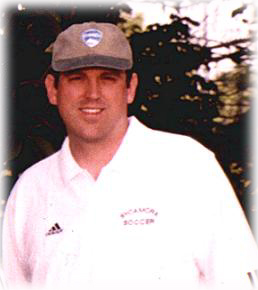





Hello to all,
My name is Ron Hochstrasser, better known as "Hoch" (pronounced Hoke) to my students. I am a high school science teacher in Cincinnati, OH. I joined the Sycamore High School staff in 1998 after spending 10 years as a science teacher in Palm Beach County, Fl. When I moved to Ohio, most people asked if I was crazy for leaving the sub-tropical warmth of the Sunshine State. Imagine the comments I hear now when I tell them I'm going to the Arctic.
During my years as a science teacher, I have taught nearly every science class offered. The list includes Earth Science, Marine Biology, Bioethics, and my current assignment teaching AP Environmental Science and Chemistry. I am especially fond of teaching Environmental Science and Bioethics. I don't think there is any greater issue facing the world today than the preservation of the environment and of natural systems. I also believe it is imperative that we be able to make wise decisions concerning scientific and medical issues of all types. I like to challenge my students to make the world a better place. Hopefully I can help them find ways to do just that. I believe that my Arctic experience will give me a chance to pass on a once in a lifetime experience to my students
When I leave school for the day, I am lucky enough to go home to a wonderful family, my wife Annette and I have three children; Tab (17), Ryan (5) and Jillian (3). We spend a lot of time working around our home and we try to get our kids out to experience nature and the community whenever we can. Our activities together include hiking, camping, fishing, visiting museums and many other fun family adventures. I am hoping they all grow to appreciate the world around us and to be wise stewards of the natural world.

Insect Adaptation to Polar Climate
Dr. Jack Duman , University of Notre Dame
Dr. Brian Barnes, University of Alaska-Fairbanks
In order to survive the extreme conditions of polar environments, species must develop some unique cold weather adaptations. Mammals develop heavy fur and thick fat layers to fend off the cold. Species such as fish, insects, arachnids and plants develop antifreeze proteins (AFP's) to protect their cells from freezing temperatures. It is these proteins that will be the focus of my fieldwork. Most species with AFPs are considered to be freeze avoiding. Freeze avoidance means that the organism is able to prevent the freezing of fluids within its body. There are however, some species which are freeze tolerant. Freeze tolerant means that the organism is able to survive the actual freezing of its body fluids. These antifreeze proteins appear to be produced as needed and act as cryoprotectants to minimize damage from the freezing of water within the organism.
The mechanism of action for the AFPs is not completely known but they are thought to work by depressing the freezing point of water through a non-colligative action. The AFPs appear interact with and inhibit the growth of ice crystals.
The application of this research can be extensive and economically important. An understanding of the mechanism of antifreeze proteins might be used to increase the lifespan of stored blood supplies and genes for antifreeze proteins found in plants might allow us to extend the growing season for many agricultural crops. Since it is unlikely that enough antifreeze protein could be harvested from natural sources to be helpful, it is important to understand the structure and functions of these proteins so that they might be produced artificially.
The objectives of this parcticular research study are as follows:
- To compare the overwintering adaptations of populations of the beetle Cucujus clavipesfrom arctic and subarctic Alaska with those from Indiana.
- To purify and characterize a new type of antifreeze protein from the Alaskan stinkbug.
- To screen and monitor insects from arctic and subarctic Alaska for antifreeze proteins.
- To monitor microhabitat climate and survivorship of overwintering insects.
My contribution to the fieldwork for this project will be primarily in assisting to the research teams of Dr. Jack Duman of the University of Notre Dame and Dr. Brian Barnes of the University of Alaska-Fairbanks with the collection and processing of field samples. Insects will be collected from sights in Alaska near Fairbanks and Wiseman and at the Toolik Lake research station on the northern slopes of the Brooks Range. Since the proteins appear to be produced as needed, the collections must take place when freezing temperatures are still the norm. Currently, collection trips are scheduled for April and September of 2002.






